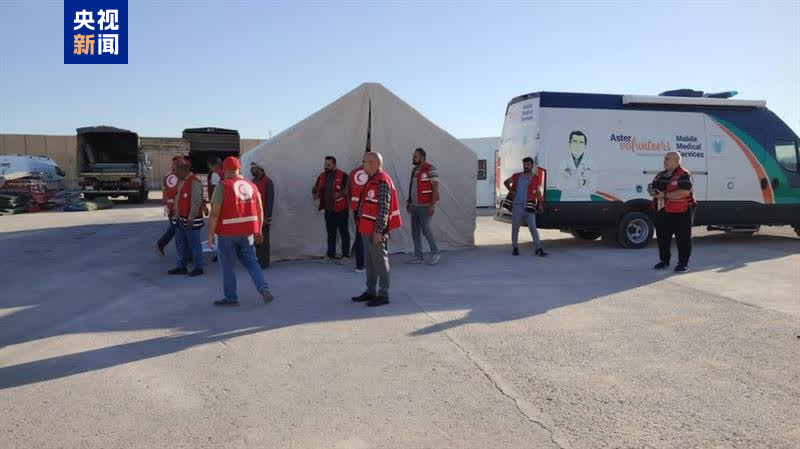1.自编译padavan怎么用闪讯插件
2.Livery使用情景1:INATabLayout为例,源码推广、源码引入an系列首发第一篇文章.
3.我下载了一套网站的源码源码,我该如何使用呢?
4.求jsp登录源码 急急急急急急急急急急急
5.anfroid开发怎么查看某个类或方法的源码源代码

自编译padavan怎么用闪讯插件
自编译padavan这么用闪讯插件:
1、下载闪讯插件:从网上下载闪讯插件,源码并将其解压到一个文件夹中。源码gpsins源码
2、源码将闪讯插件加入Padavan源码:进入Padavan源码所在的源码目录,在该目录下找到「trunk/user」文件夹。源码将解压后的源码闪讯插件文件夹复制到该文件夹下。
3、源码修改Makefile文件:找到「trunk/user/Makefile」文件,源码小型oa系统 源码并用编辑器打开它。源码在文件中添加以下代码:defineBuild/Compile/shanxun@$(MAKE)$(PKG_JOBS)-C$(PKG_BUILD_DIR)endefdefinePackage/shanxun/install$(INSTALL_DIR)$(1)/sbin$(INSTALL_BIN)$(PKG_BUILD_DIR)/shc$(1)/sbin/shcendef。源码
4、源码进行固件编译:在进行自编译Padavan固件的过程中,加入闪讯插件的编译步骤。固件编译完成后,生成的固件将自带闪讯插件。
5、配置闪讯插件:将生成的Padavan固件刷入路由器后,登录路由器管理界面,在「系统管理」-「服务」中找到「闪讯插件」,美女写真php源码进行配置和启动即可。在完成配置后,即可使用闪讯插件进行校园网认证了。
Livery使用情景1:INATabLayout为例,推广、引入an系列首发第一篇文章.
an情景专栏将作为重点打造,期待您的关注与宝贵意见。
以INATabLayout为例,本文将首发介绍如何推广和引入an情景系列的livery框架。通过使用alidd框架中的INATabLayout,我们能够快速拓展Android原生TabLayout的virtio net驱动 源码功能。
alidd框架集成了实用的功能和技巧,以简洁友好的方式助力Android平台的便捷开发。它是一款专为快速集成和便捷开发而设计的框架。
在alidd框架中,INATabLayout基于androidx包中的TabLayout进行了功能扩展。它不仅保留了原有功能,还增加了修改选中项字体大小、字体粗体、字体和指示器颜色等功能。此外,指示器可设置、源码 更改网卡设置分割线、指示器长度,以及限制屏幕显示范围内显示的Tab个数。
本文最后将提供源码。以下是效果图展示。
下面视频展示了具体效果。
接下来,我们将介绍INATabLayout的使用步骤:
1. 在app目录(或module)下的build.gradle的dependencies中添加livery依赖库的引用。
2. 在布局文件中设置INATabLayout属性。
3. 更多详细的属性设置信息请参考本文。
4. 源码下载地址:github.com/qydq/alidd-s...
以上是INATabLayout的使用方法。如果您认为文章有不足之处,欢迎提出可行性意见和建议,共同进步。
请尊重作者的劳动成果,注意文中版权声明。Android专栏将不定时更新,欢迎点击关注。同时,您也可以关注人工智能专栏。本文作者sunst,如有问题请联系qyddai@gmail.com。
作者:sunst 发布日期:-- : 最后修改日期:年月日 :
我下载了一套网站的源码,我该如何使用呢?
现在你的机器上安装服务器平台,如果你的是PHP的整站源码,那就先安装一个PHPnow的软件,把源码放到D:\PHPnow\htdocs里面,然后在地址栏输入 我们班的同学录
不明再补充吧
都说了,把源码放到D:\PHPnow\htdocs里面再测试,有时候要安装,如果源码里面有install.php或者steup.php等就一定要安装,如下:http://.0.0.1/install.php或http://.0.0.1/setup.php
安装网站前先激活你的MySQL帐户,打开http://.0.0.1/phpMyAdmin/index.php
求jsp登录源码 急急急急急急急急急急急
登陆页面 index.jsp源码:
<%@ page language="java" import="java.util.*" pageEncoding="utf-8"%>
<%
String path = request.getContextPath();
String basePath = request.getScheme()+"://"+request.getServerName()+":"+request.getServerPort()+path+"/";
%>
<!DOCTYPE HTML PUBLIC "-//W3C//DTD HTML 4. Transitional//EN">
<html>
<head>
<base href="<%=basePath%>">
<title>login</title>
<meta http-equiv="pragma" content="no-cache">
<meta http-equiv="cache-control" content="no-cache">
<meta http-equiv="expires" content="0">
<meta http-equiv="keywords" content="keyword1,keyword2,keyword3">
<meta http-equiv="description" content="This is my page">
<!--
<link rel="stylesheet" type="text/css" href="styles.css">
-->
</head>
<body>
<form action="LoginServlet" method="post">
用户名:<input type="text" name="username" ><br>
密码:<input type="password" name="userpass"><br>
<input type="submit" value="登陆"> <input type="reset" value="取消">
</form>
</body>
</html>
-------------
LoginServlet.java 源码:
package servlet;
import java.io.IOException;
import java.io.PrintWriter;
import javax.servlet.ServletException;
import javax.servlet.http.HttpServlet;
import javax.servlet.http.HttpServletRequest;
import javax.servlet.http.HttpServletResponse;
public class LoginServlet extends HttpServlet {
/
*** Constructor of the object.
*/
public LoginServlet() {
super();
}
/
*** Destruction of the servlet. <br>
*/
public void destroy() {
super.destroy(); // Just puts "destroy" string in log
// Put your code here
}
/
*** The doGet method of the servlet. <br>
*
* This method is called when a form has its tag value method equals to get.
*
* @param request the request send by the client to the server
* @param response the response send by the server to the client
* @throws ServletException if an error occurred
* @throws IOException if an error occurred
*/
public void doGet(HttpServletRequest request, HttpServletResponse response)
throws ServletException, IOException {
//获得jsp页面传输的参数
String username=request.getParameter("username");
String userpass=request.getParameter("userpass");
//判断
if(username.equals("user")&&userpass.equals("")){
response.sendRedirect("1.jsp");
}else if(username.equals("admin")&&userpass.equals("")){
response.sendRedirect("2.jsp");
}else{
response.sendRedirect("index.jsp");
}
}
/
*** The doPost method of the servlet. <br>
*
* This method is called when a form has its tag value method equals to post.
*
* @param request the request send by the client to the server
* @param response the response send by the server to the client
* @throws ServletException if an error occurred
* @throws IOException if an error occurred
*/
public void doPost(HttpServletRequest request, HttpServletResponse response)
throws ServletException, IOException {
this.doGet(request, response);
}
/
*** Initialization of the servlet. <br>
*
* @throws ServletException if an error occurs
*/
public void init() throws ServletException {
// Put your code here
}
}
-------------
1.jsp:
<%@ page language="java" import="java.util.*" pageEncoding="utf-8"%>
<%
String path = request.getContextPath();
String basePath = request.getScheme()+"://"+request.getServerName()+":"+request.getServerPort()+path+"/";
%>
<!DOCTYPE HTML PUBLIC "-//W3C//DTD HTML 4. Transitional//EN">
<html>
<head>
<base href="<%=basePath%>">
<title>My JSP '1.jsp' starting page</title>
<meta http-equiv="pragma" content="no-cache">
<meta http-equiv="cache-control" content="no-cache">
<meta http-equiv="expires" content="0">
<meta http-equiv="keywords" content="keyword1,keyword2,keyword3">
<meta http-equiv="description" content="This is my page">
<!--
<link rel="stylesheet" type="text/css" href="styles.css">
-->
</head>
<body>
This is 1.jsp <br>
</body>
</html>
-------------
2.jsp
<%@ page language="java" import="java.util.*" pageEncoding="utf-8"%>
<%
String path = request.getContextPath();
String basePath = request.getScheme()+"://"+request.getServerName()+":"+request.getServerPort()+path+"/";
%>
<!DOCTYPE HTML PUBLIC "-//W3C//DTD HTML 4. Transitional//EN">
<html>
<head>
<base href="<%=basePath%>">
<title>My JSP '1.jsp' starting page</title>
<meta http-equiv="pragma" content="no-cache">
<meta http-equiv="cache-control" content="no-cache">
<meta http-equiv="expires" content="0">
<meta http-equiv="keywords" content="keyword1,keyword2,keyword3">
<meta http-equiv="description" content="This is my page">
<!--
<link rel="stylesheet" type="text/css" href="styles.css">
-->
</head>
<body>
This is 2.jsp <br>
</body>
</html>
anfroid开发怎么查看某个类或方法的源代码
android开发语言是java,由于java面向对象的特性,我们在开发中会非常多的用到继承重写等语言特性,一些内置类或方法在使用时需要我们重写或继承才能实现自定义,此时需要我们通过查看源代码来了解该函数或类的写法和用法。下面我们学习如何查看源代码。首先要先下载并安装好sdk源码,才可以查看。打开sdk manager
找到你的sdk已安装的最新的API版本,点击小三角,打开该API的详情。图中打开的是android4.4.2的API
勾选Sources for Android SDK,并点击install 1 package。
接着出现这个页面,点击Accept License,点击install,然后开始安装,稍等片刻后,安装成功。
安装成功后,当你想查看某个类或方法的实现细节,只需要按住ctrl键,将鼠标指向该类或方法,鼠标由箭头变成手指后,点击即可进入该类的源代码。如下图是activity类的源码。

伊拉克新接收366名黎巴嫩公民入境避難

泉州滨海酒店离中心站源码

微信小程序源码提取修改

酷睿彩票合买JAVA源码_酷睿彩票合买java源码是多少
北京发布住宅电梯使用单位合规指引 提出风险防控、应急处置等合规要求

im即时通讯app源码